Tale of Many Cities: Unmade in America
A look at how industrial flight led to the decline of Black communities in cities across the country.
Manufacturing jobs have declined dramatically in recent decades, from a peak of more than 19 million in 1978 to about 12 million today. Five million have been lost since China joined the World Trade Organization at the start of the 21st century.
Factory workers and manufacturing communities across the country were hurt because of this job loss, but Black workers faced unique challenges. In the 2016 report, Unmade in America: Industrial Flight and the Decline of Black Communities, author Gerald D. Taylor examines the reasons why Black workers felt the force of deindustrialization so intensely and examines potential policy solutions to help Black manufacturing communities rebound.
In the series of vignettes below, we examine the impact of industrial flight had in Black communities in several cities, starting in St. Louis.
St. Louis: City of Gabriels

A city can be known by her sounds. St. Louis gave birth to so many majestic horn players she earned the nickname, “City of Gabriels.” Homegrown talents like Miles Davis and Clark Terry created sounds that were complex, provocative, and soul-stirring. Parallel to the rich blare of trumpets, St. Louis was making other music.
During the post-World War II manufacturing boom, the stomp of steel being flattened and formed, the sizzle and buzz of a welder’s torch, and the rhythmic clicks of a conveyor belt mixed it up like jazzy love tunes. These were some of the sweetest St. Louis sounds. As her workers prospered, they bought homes, paid taxes, and fueled an economy that contributed to the rise and vibrancy of middle class communities.
Her Black neighborhoods also thrived. The Ville — once a beacon of the Black middle and even upper classes in St. Louis — was home to Black professionals, entertainers, and elegant mansion-sized brick homes. Small businesses abounded. Dentists’ and other doctors’ offices, a movie theater, a hotel, and stores of every type stood proud. Arthur Ashe, Tina Turner, and Chuck Berry all attended The Ville’s Sumner High School — the first school west of the Mississippi to provide secondary education to Black students.
Viable communities like The Ville were largely sustained by the magnitude of manufacturing jobs in St. Louis. Those jobs were secure, paid fairly, and ensured people without college degrees had equal opportunities to participate in the American dream.
That participation engendered pride magnified at workplaces like Granite City Mill, which supplied steel products to industries ranging from construction to container to tubing and piping, and yes, automotive. During her heyday, St. Louis was second only to Detroit in auto manufacturing, with Ford, Chrysler, and General Motors Co. plants located within her boundaries.
As gleaming new cars rolled off assembly lines, factory employees knew what they did mattered; the manifestations of their work literally kept America moving, until it did not. When the sounds resonating from her steel mills, factories, and automotive plants changed — from the stomping, sizzling, click-clack love timbres to the awful cacophony of ripping away, of unmaking, of industrial flight — it broke the heart of the city. It was worse than the blues.
While industrial flight goes back to the 1970s, the pain it caused has become most glaring since the turn of the century. The staggering disappearance of 5.7 million manufacturing jobs between March 1998 and December 2013 rocked many American communities.
St. Louis has grieved over her share of that abandonment. She lost her Ford plant in 2006; the subsequent closing of two Chrysler assembly plants wiped out more than 6,000 jobs. In general, more than 43,000 direct and indirect jobs are gone. More than 43,000 families were left in financial quagmires about how to pay the mortgage, save for retirement, fix the roof, repair the brakes on the car, or take the child to the dentist. It was eviscerating, leaving blight the size of craters, especially in her once regal, storybook community: The Ville.
Industrial flight has a dramatic impact on everyone. Depleted industrial centers endure the long term effects of unemployment and diminished public services. The declining tax base means less money for schools, roadways, and public safety. But the impact is intensified as it reverberates like ear-splitting sirens through Black communities.
That was certainly the case with The Ville. Today, huge swaths of the once proud and stately neighborhood resemble a bombed-out war zone, with few vestiges of its former glory. Many of those elegant brick homes are now abandoned eyesores. Some blocks have been reduced to vacant lots of overgrown grass. Five schools sit idle, like so many St. Louis factories and mills. The murder rate has soared. Unemployment has gone through the caved-in roofs. Many still there feel trapped, hopeless, disengaged — in this, the “City of Gabriels.”
Gabriel, according to some biblical interpretations, is the favored angel who will sound the trumpet to wake the dead. If St. Louis can develop her workforce to meet her changing needs, so even those without a college degree can once again be on a path to live the American dream; if she can reverse the decline of her faltering Infrastructure and invest in major restoration of profoundly impacted neighborhoods like The Ville; if U.S. trade policy can stand with her, not against her, ensuring that trade and import agreements do not disadvantage her workers, then it may be possible for St. Louis to have a new sound.
She could blow that beautiful extended blare: the sound of awakening, signaling that those parts of her thought dead are coming alive once again.
So, as the song says, “Blow, Gabriel, Blow.”
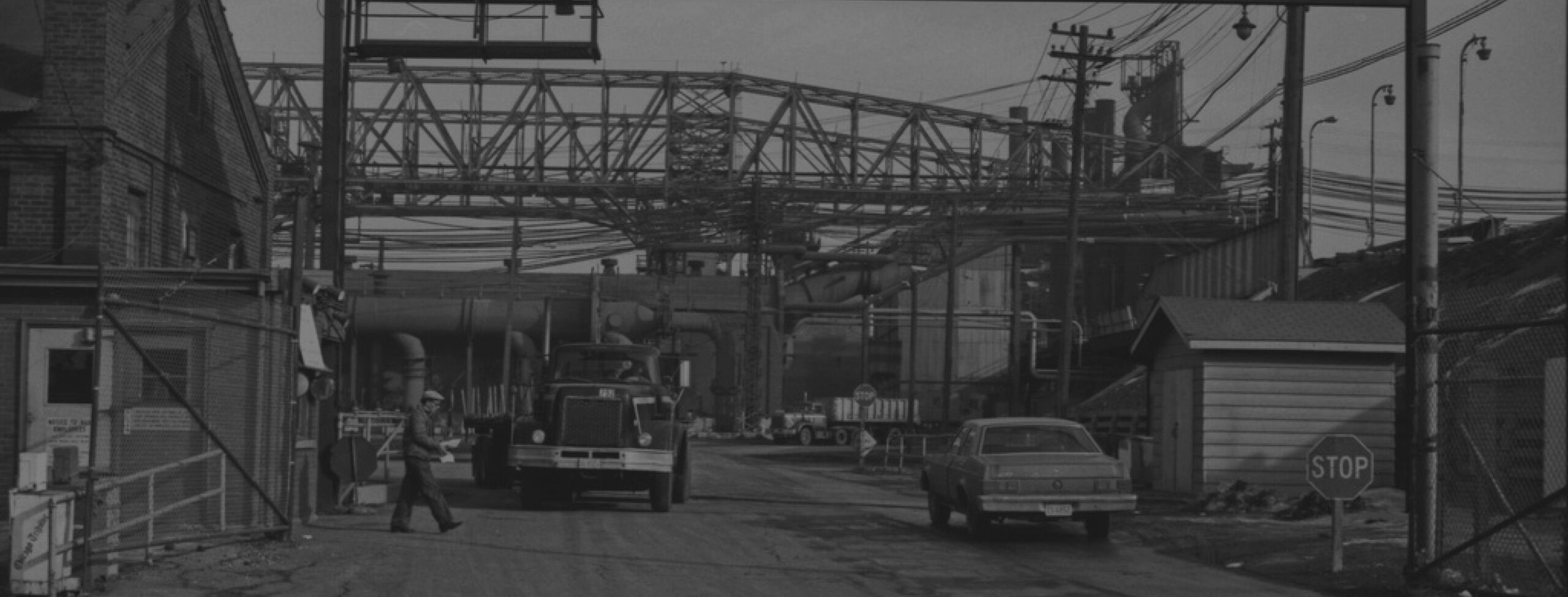
Industrial flight has a dramatic impact on everyone. Depleted industrial centers endure the long term effects of unemployment and diminished public services. The declining tax base means less money for schools, roadways, and public safety. But the impact is intensified as it reverberates like ear-splitting sirens through Black communities.
Defuse Baltimore or Let It Explode?
When we witnessed the Baltimore uprising in spring 2015, it was tempting to name the death of 25-year-old Freddie Gray as the sole cause. Gray succumbed to a traumatic spine injury suffered in the back of a police van — another unarmed Black man who died at the hands of police.
Surely a straight line exists between the intense images of that blazing Baltimore CVS and the death of Freddie Gray. But a closer look reveals the tinder box of industrial flight, which devastated all of Baltimore, but particularly ravaged her Black community. It is a longer line, filled with complications as it stretches all the way back to Baltimore’s earlier days.
In her youth, Baltimore’s geography charmed and tantalized. She is geographically protected from most hurricanes by the Delmarva Peninsula. She is shielded by the Appalachian Mountains from the coldest weather that would freeze her port. Her Patapsco River seduced Pennsylvania Steel in the late 19th century, and they danced until another suitor, Bethlehem Steel, cut in and acquired the company in 1916. That relationship grew into a love affair that yielded the largest steel mill in the world: Sparrows Point.
Situated at the edge of Baltimore’s alluring Outer Harbor, Sparrows Point made the steel that made 20th century America: The Golden Gate Bridge; the George Washington Bridge; Rockefeller Center; the U.S. Supreme Court Building. It produced so much of the Infrastructure of the United States, some called Sparrows Point the Beast of the East, others, the Goddess of Industry. Its shipbuilding component supplied tankers and bulk carriers for private sector customers throughout and between both world wars.
By the late 1950s, the mill’s employment rolls climbed north of 35,000. Those workers — many African American and nearly all union members — were earning middle class wages, buying homes, sending their children to college, and paying taxes that funded roads, schools, and public services.
But imported steel encroached on the prolific love affair between Baltimore and her steel mill in the early 1970s. Not long after, the thrill was gone. Baltimore was bleeding jobs — 10,000 jobs gone by 1975. Small businesses folded, no longer sustained by those workers’ wages. The declining tax base meant curtailed services. People, who could, fled for the suburban hills. People who could not leave were simultaneously riven by a downward spiral of lessening employment opportunities and city services, and an upward spiral of frustration and despair. And then came the rage.
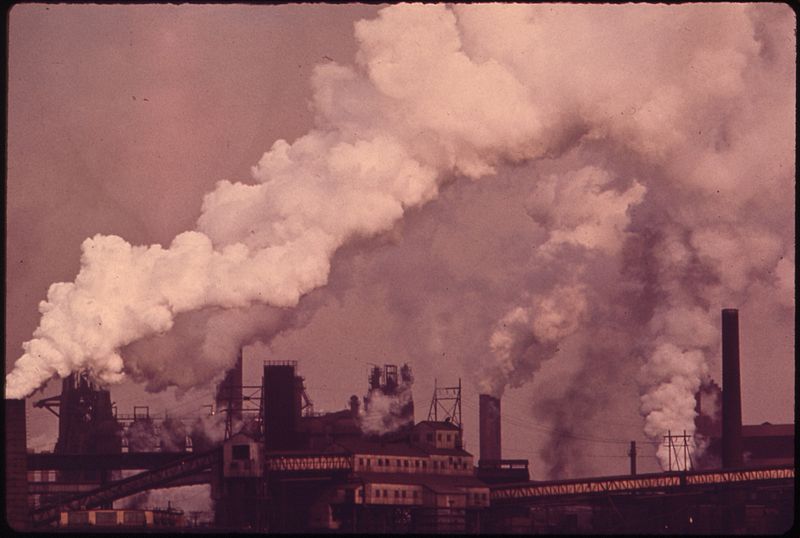
Before the first match was struck during the revolt sparked by the death of Freddie Gray, Baltimore was already smoldering from her loss of more than 100,000 manufacturing jobs. Before the first chant was hurled at the battalions of police holding the line around the CVS, decades earlier, unscrupulous realtors had exploited the situation created by the downturn in manufacturing jobs and provoked white flight by illegally practicing block busting. Before the first brick was thrown, many of the good-paying union jobs in factories and mills evaporated, vaporizing the stability of the middle class families who depended on them, including Black families.
Baltimore’s manufacturing jobs were mostly replaced by non-union, service-sector jobs that paid low wages with no benefits.
Before the “contents under pressure” necessary for an explosion had been dragged to that downtown Baltimore street, her inner city had already been reduced by drugs, crime, and gross inequities in the criminal justice system.
As John Angelos, the COO of the Baltimore Orioles tweeted with passion during the uprising:
…My greater source of personal concern, outrage and sympathy beyond this particular case is focused neither upon one night’s property damage nor upon the acts, but is focused rather upon the past four-decade period during which an American political elite have shipped middle class and working class jobs away from Baltimore and cities and towns around the U.S. to third-world dictatorships like China and others…
As Angelos pointed out, There is a more accurate, more complex story of people filled with the sense that there are no options, no places to turn; feeling trapped in a perpetual state of emergency, lacking any sense of security. The pervasive impact of industrial flight is the real powder keg, and it’s far more permanent than the looting of a drugstore.
But this ticking explosive can be defused. Fair trade policy can create new middle-class opportunities. It can also help protect the most vulnerable people from the workplace injuries, poverty, desperation, and deaths that frequently come along with being exploited as cheap labor when unfair international trade agreements create a global race to the bottom.
Although the love affair between Baltimore and Sparrows Point is now a closed chapter, it is still possible to bring back some of those lost manufacturing jobs by reversing the unmade in America trend. Proper investment in Infrastructure could fuel the manufacturing sector even more. Incentivizing entrepreneurial companies like Baltimore’s own UnderArmour to invest in urban manufacturing. And smart workforce training can ready Baltimore’s sons and daughters to take positions that once again enable real participation in the American dream — and defer that dream no longer.
Chicago’s Magnificent Mile: Magnificence Lost
Modern-day Chicago is known for her Magnificent Mile, that stretch of opulence where designer names drip from the shops like diamond pendants, and the cost of retail space soars almost to the heights of Rodeo Drive in Beverly Hills, or even New York City’s Fifth Avenue. But Chicago has another magnificent landscape: a seven-mile stretch, where the wealth has been measured more in terms of its cultural cache.
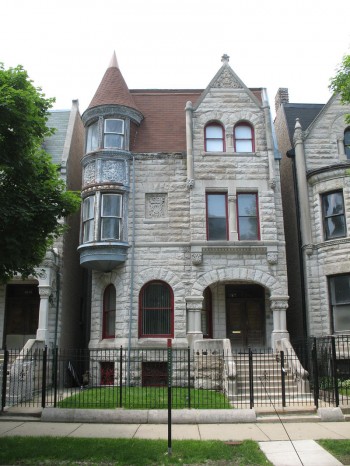
The names associated with the place are designer in a more substantive way, for example: journalist and activist Ida B. Wells; author Richard Wright; Pulitzer Prize-winning poet Gwendolyn Brooks; first Black woman pilot Bessie Coleman; baseball’s Negro National League founder Andrew Foster; rhythm and blues singers Sam Cooke and Lou Rawls. Even Louis Armstrong claimed this section of Chicago as his home.
The community dubbed itself Bronzeville, an obvious reference to the skin color of the people who lived there. The neighborhood began forming during the Great Migration, as Black southerners escaped the overt oppression of the South, sought industrial jobs, and settled there. The area pulsed with the sights, sounds, and tastes of the new transplants. It grew so much in population and vibrancy, it became known as the Black Metropolis for its intersection of Black arts, commerce, and religion. During its heyday, more than 3,000 people lived in that narrow stretch of South Side Chicago.
By then, Chicago’s manufacturing sector had grown from the earlier metal working industries. In the mid-19th century, mills located to her rivers for access to water and the abundance of inexpensive land. They produced steel, pig iron, and coke. By the beginning of the 20th century, steel mills in Chicago had exploded in size and were selling large quantities of steel products to companies building railroads and bridges. As the steel industry expanded, it also consolidated — and giants emerged.
U.S. Steel and Wisconsin Steel together employed tens of thousands of workers. Many of Bronzeville’s residents worked at the steel mills and were able to provide a decent living for their families while also contributing to the sustainability of their neighborhoods. New Deal legislation in the 1930s helped even more by making it easier for workers to unite in a union. By 1970, the United Steelworkers had more than 130,000 members. African American members had become one of the prominent USW ethnic groups. At about the same time period, steel production in the Illinois-Indiana region began to peak, rising to become the geographic center of the U.S. steel industry.
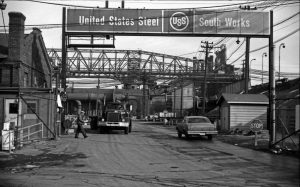
But steel produced overseas was allowed to overtake the U.S. product, and the U.S. steel industry suddenly collapsed. It was stunning; especially to the Chicago area that had once seen 200,000 people employed by her steel mills and steel-related manufacturers. Two hundred thousand families had been able to buy homes and cars, and contribute to the tax base that kept their communities comfortably livable. Jobs were slashed. Economic and emotional upheaval followed, as those suddenly unemployed scrambled to adjust. By the mid-1980s, Chicago’s steel industry had been eviscerated — and so had many of her neighborhoods built and kept viable by the manufacturing sector, especially Black neighborhoods like Bronzeville.
Industrial flight is devastating to all communities, but the devastation is even worse in those Black communities that depend on the stability of manufacturing jobs. Black neighborhoods take longer to recover — if they do at all. Crime increases, while city services, due to the shrinking tax base, decrease. Those who can, leave. Those who cannot, remain — often on a course to chart a horrible legacy of generational poverty. Adding even more to the tragic demise, the jobs lost in the manufacturing sector are generally replaced by low-paying non-union service sector jobs.
Strolling along the Magnificent Mile, it appears that Chicago has recovered from the plague of products being unmade in America. In reality, that stretch of opulence is indicative of the disparity industrial flight has ushered in: stores filled with goods made overseas that seldom can be afforded by those Chicagoans whose livelihoods depended on manufacturing jobs that have left the United States.
The gap can be closed. Fair trade policy that does not disadvantage American manufacturers can stop the flood of goods made overseas. Proper investment in Infrastructure could fuel the manufacturing sector even more. Smart workforce training can ready those frozen out of Chicago’s new economies.
Communities like Bronzeville don’t aspire to become the Magnificent Mile, and they will not. But they can recover some of their own magnificence lost.
Gary to Manufacturing: Microcosmic Decline
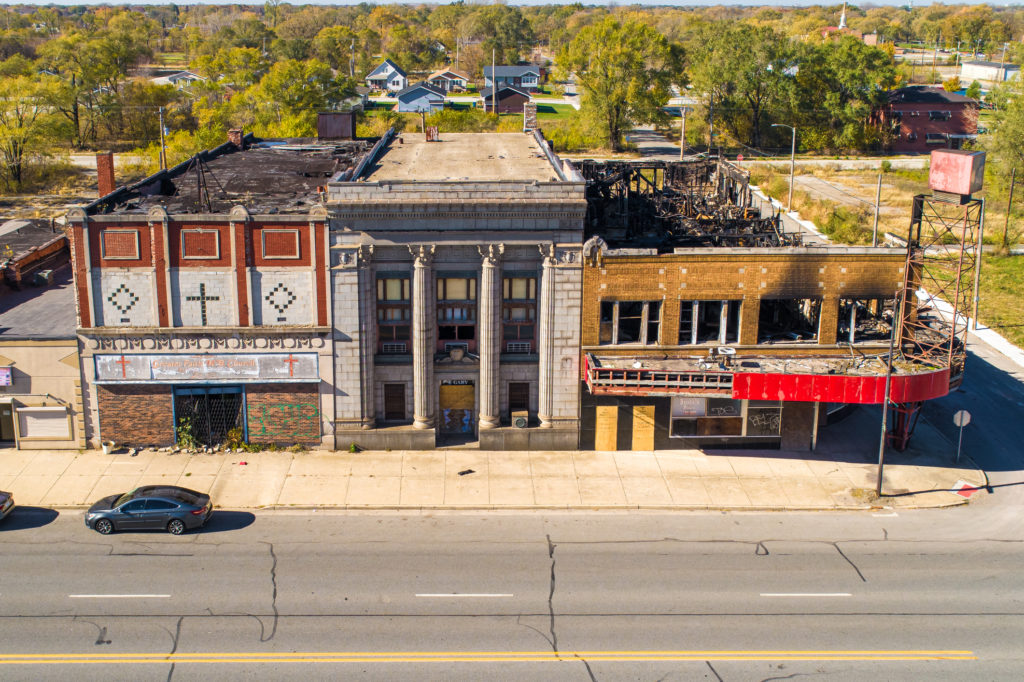
About 25 miles from downtown Chicago sits Gary, Indiana. To many, Gary will forever be known as home to The Jackson 5, the charismatic pop band that enjoyed international success and launched the solo career of the late Michael Jackson.
But before their careers came to fruition, the Jacksons’ parents, Joe and Katherine, were just like millions of Black couples at that time—Southern expats who moved to the Midwest as part of the Great Migration. They met in 1947 in East Chicago, Indiana, where Joe worked for Inland Steel Company before settling in Gary a few years later.
Gary was founded as a company town in 1906 by U.S. Steel Corporation as a base for its burgeoning industry. The city boomed. By 1960, Inland Steel had joined with U.S. Steel and other manufacturing plants to build Gary into a thriving city with a population that swelled to 178,000.
But by the 1970s, Gary began to suffer as the steel market slowed. Inland Steel’s net profit declined from $81.7 million in 1968 to $46.7 million in 1970. And, while the company would experience bounce backs and setbacks over that decade, U.S. Steel, citing record hemorrhaging of revenue, would lay off thousands of workers throughout the 1980s.
The trend in Gary was microcosmic of the dramatic decline of industrial sectors across the country.
By 1990, what remained in the Gary area were slightly more than 59,000 manufacturing jobs. Eventually, Inland Steel was acquired by Ispat International N.V. (Dutch for “nameless partnership”). At the same time, U.S. Steel—which remains the city’s largest employer—was downsizing, employing only 6,000 workers compared to 30,000 in the 1970s, further damaging the city’s economic viability. Imports and changing technology shook the employment base of the community.
Today, Gary—a mere shadow of its once thriving self—has an unemployment rate of nearly 10 percent and a population of 80,000 people.
A Diversified Pittsburgh
Before the crack that led to the fissure that led to the implosion of the steel industry in the United States, Pittsburgh and her manufacturing sector had a good thing going. In their marriage, she even took the name Steel City.
The mere mention of Pittsburgh conjured up images of massive mills making the steel that was building the nation’s Infrastructure; keeping it moving with the cars and trucks and trains and planes and ships; taking it higher as skyscraping towers transformed the nation’s landscape. America’s appetite for steel seemed insatiable and Pittsburgh was at the center of meeting the demand. By the early 1970s, the Pittsburgh region employed more than 300,000 people in the manufacturing sector.
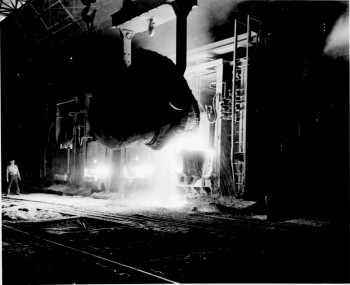
Steelmaking gained prominence in Pittsburgh in the 1870s, along with its most famous steelmaker, Andrew Carnegie. Carnegie partnered with Henry Clay Frick, the beehive coke oven magnate. Such ovens were necessary for turning coal to coke, a needed ingredient for making steel. Together they formed the Carnegie Steel Company, which, after it was sold in 1901, became the mammoth corporation known as U.S. Steel. By 1911, almost half of the nation’s steel was being made in the Pittsburgh region.
As a result, small towns sprouted, blossomed, and became bustling havens for immigrants who easily found work in the factories and mills. One such town was Aliquippa. Sitting along the Ohio River, first generation European immigrants and some African Americans settled there during the Great Migration. They lived in planned communities built by Jones and Laughlin Steel Corp. These were communities that hummed with promise and even prosperity as the rise of unions during the New Deal era ensured equitable pay and better work conditions. The people who lived there could support their local grocers, gas stations, movie houses and hotels. Similarly, the Hill District — famously depicted by Pittsburgh playwright August Wilson in his award-winning 10-play series The Pittsburgh Cycle — attracted Black southerners. Many of them found decent-paying jobs in the steel mills and factories in and around Pittsburgh, and contributed to the cultural vibrancy of that time and place.
The post-World War II era saw continued expansion in the region’s industrial base and it seemed that Pittsburgh and her steel were riding together on an unstoppable skyward trajectory. But the allure of foreign-made steel’s cheaper price tag and sudden abundance in the United States caused a reversal of course by the early 1970s. The industry came crashing down, bringing Pittsburgh with it.
Her economy in shambles, her tax base evaporating—between the 1970s and 1990s, Pittsburgh lost 30 percent of her population. By 1983, her metropolitan region was experiencing a stunning 17.1 percent unemployment rate. Her heart broken, she sought out other partners to help her heal. Finding comfort in diversifying this time: service, medicine, tourism, technology — she is now home to thousands of new technology firms. Google set up shop there in 2006.
By all accounts, the Pittsburgh region seems to have rebounded much better than her Industrial Heartland sisters — until Aliquippa is revisited, the town that was once filled with so much possibility. When the steel industry collapsed and wiped out thousands of jobs, almost overnight, Aliquippa quickly filled with despair as it was rendered a ghostly shadow of a town.
As a moral imperative, these communities deserve an opportunity to rebound too. With public Infrastructure investment to reverse the decline, including smart investments to improve roads and restore deteriorating structures; with workforce development to assist those former steelworkers who decide becoming tech-savvy or garnering a college degree is not a viable option for them; and with smart trade policy where trade and import terms are fair and do not disadvantage U.S. workers, all of Pittsburgh might profit from her diversification and relish her astounding recovery. Two of Pittsburgh’s core strengths are people with manufacturing know-how and companies with manufacturing research and development. Let’s put them back to work.
Magic City Birmingham
“If it’s magic then, why can’t it be everlasting?”
The question posed by the lyrics in Stevie Wonder’s classic tune, “If It’s Magic” could be asked of Birmingham, Alabama. After incorporating as a city in 1871, Birmingham — named for one of England’s major industrial cities — grew into her own industrial power with such astounding speed, she was nicknamed “Magic City.” Jones County, where Birmingham is located, is the only place on earth whose core contains substantial quantities of coal, iron ore, and limestone all in close proximity to one another. The magic took an evil sorcerer’s sleight of hand in Birmingham’s early days when her iron manufacturers exploited the prison population through an egregious convict leasing system. It sent prisoners, mostly young Black men, to work in the mines where they suffered deplorable, dangerous conditions. Birmingham’s steelmakers could also access an endless supply of inexpensive labor from freedmen and poor southern whites looking to escape sharecropping and tenant farming legacies, while playing on racial tensions to further divide and conquer.
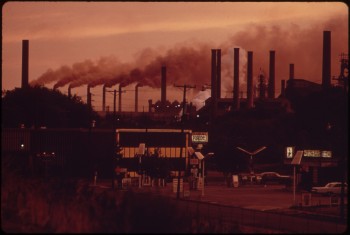
Her inexhaustible supplies of raw materials and low cost labor, and an increasing national demand for iron and steel, rocketed Magic City Birmingham to become the largest iron and steel producer in the southern United States by 1907. The same year, her largest steel producer, Tennessee Coal Iron and Railroad, was acquired by U.S. Steel.
By 1910, Black workers made up 75 percent of the industrial workforce in Alabama. In 1928, Alabama outlawed its convict leasing program, the last state to do so. The Great Migration threatened to cut into the area’s pool of Black workers as many headed north, so employers had to raise wages. Then the Great Depression hit, devastating Birmingham’s economy and, as she sought to recover, business leaders fought the labor reforms of the New Deal. Ultimately labor unions did win some recognition battles, and Birmingham’s economy improved, along with her workers’ paychecks, as her industries prepared for World War II.
Meanwhile, company towns began springing up around Birmingham’s steel plants. Pratt, a widespread area just north of her downtown, became her first boomtown, growing to become a working class community of steelworkers. The region also served as a base for Birmingham’s civil rights movement; Martin Luther King Jr.’s younger brother, A.D. King, pastored a church in the area.
The town of Ensley was annexed into Birmingham in 1910. Mills and plants were opening so rapidly, Ensley could barely build streets, sidewalks, schools, libraries and places of worship at a pace fast enough to keep up. By 1925, Ensley had at least two banks, two funeral homes — one white and one Black, jewelers, laundries, flower shops, pawn shops, fruit dealers, barber shops, tailors, an F.W. Woolworth, a Western Union, and a Singer sewing store. It bustled during the day and also became known for its spirited night life. Tuxedo Junction, the place to go for Black music in the 1920s, garnered national fame after a hit song about it was recorded in 1939.
But during the middle of the century, Birmingham’s iron and steel industry began to decline when Germany and Japan exported iron to the United States, pricing it much lower than domestic producers. The decline continued into the early 1980s with the proliferation of cheap China-made steel overtaking the U.S. steel industry. For Ensley, the slide culminated in 1976 when U.S. Steel closed its Ensley Works. It had employed 30,000 people at its height. As the jobs went, so went lively neighborhoods like Ensley and Pratt, now shadows of their former selves.
About 38,000 people remain employed in manufacturing in the Birmingham region, but struggles continue. U.S. Steel has largely idled its facility in the nearby city of Fairfield because of unfair imports from places like China. Fairfield, out of revenue, voted to disband its police department and the fire department is relying on donations to get by. Even the local Walmart closed up shop.
Ultimately Birmingham’s sudden industrial prowess had less to do with hocus pocus, and more to do with her geology. And her industrial decline was not magic, but math; the exponential rate of goods unmade in America. But the same manufacturing boom that helped create the world’s greatest economic power can also put our nation to work and on the path to prosperity. It can revive riddled neighborhoods that depended on manufacturing. Infrastructure investment is a key solution to reverse the decline in urban centers created by industrial flight. Workforce development will put the nation on a path to success. And U.S. trade policy must enforce rules on the books and not disadvantage U.S. workers.
The Stevie Wonder song ends with the words: “Why can’t we make it everlasting…it will leave no heart undone, for there’s enough for everyone.”
Story Credits: Getty Images
